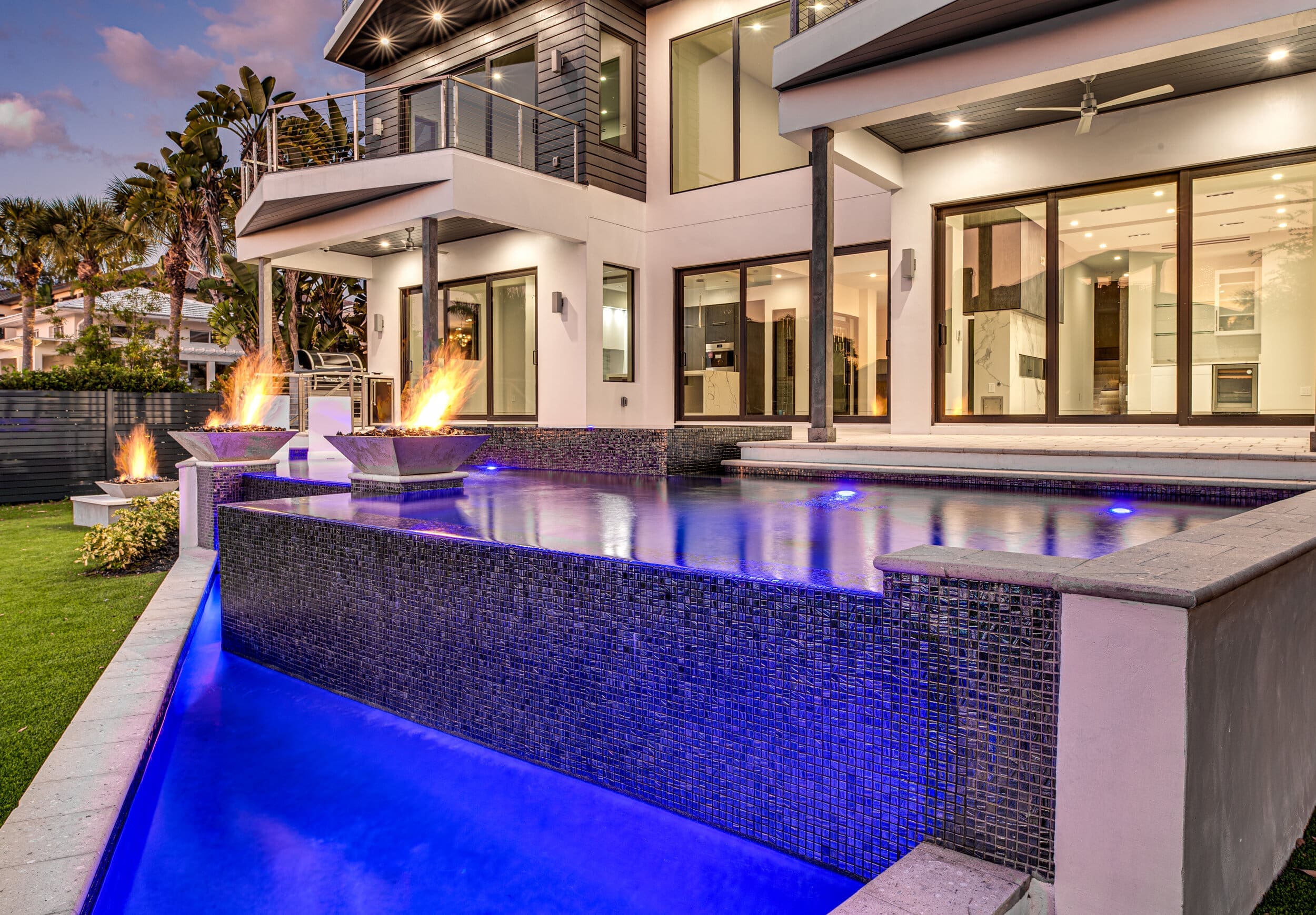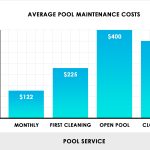Putting in a pool can cost anywhere from $20,000 to $100,000, depending on factors such as pool type, size, materials, and additional features. Enjoy the luxury of a private swimming pool right in your backyard.
Investing in a pool enhances the value of your property and provides a convenient and enjoyable way to beat the summer heat. Whether you prefer a simple above-ground pool or a high-end in-ground design, the cost will vary based on your preferences and budget.
We will explore the various factors that influence the cost of installing a pool, allowing you to make an informed decision about your backyard oasis.

Credit: homeguide.com
Factors Affecting Pool Installation Cost
If you’re considering installing a pool, understanding the factors that affect the cost can help you plan your budget effectively. Several elements influence the overall expense of putting in a pool, including its size, the materials and design choices, and any additional features you may want to incorporate. By examining these factors, you can gain an insight into the potential costs involved in your pool installation project.
Size Of The Pool
The size of the pool significantly impacts the cost of installation. Larger pools will require more extensive excavation, additional structural support, and increased amounts of material. Moreover, larger pools generally necessitate more powerful pumps and filtration systems, affecting ongoing operating costs.
Material And Design Choices
The materials and design options you select will have a substantial impact on the overall cost of pool installation. Factors such as the type of pool shell (concrete, fiberglass, or vinyl), the finish (such as tiles or pebble), and the overall design complexity will affect the total expenses.
Additional Features
Integrating additional features such as waterfalls, lighting, heating, and automation can significantly increase the total cost of pool installation. These extra elements not only require initial investment but can also lead to higher ongoing maintenance and operational expenses.
Understanding The Cost Breakdown
Initial Planning And Permits
Involves designing and obtaining necessary permissions.
Excavation And Site Preparation
Includes clearing the area and creating a solid foundation.
Materials And Equipment
Cost of pool materials like concrete, fiberglass, or vinyl.
Labor Costs
Expense for contractors and workers for installation.
Determining Your Budget
Considering installing a pool? Determine your budget by factoring in costs like size, materials, permits, and landscaping. Prices vary depending on choices made, but average installation expenses can range from $30,000 to $70,000, so plan wisely.
Introduction
Before diving into the exciting world of pool installation, it is crucial to determine your budget. Setting a realistic budget ensures that you make informed decisions throughout the process, avoiding any financial surprises along the way. By evaluating financing options and setting realistic expectations, you can confidently embark on your pool installation journey with a clear understanding of the costs involved.
Setting Realistic Expectations
When determining your budget for a pool installation, it is essential to set realistic expectations. The cost of putting in a pool can vary significantly depending on various factors such as the type of pool, size, materials, and additional features desired. Whether you are envisioning a luxurious oasis or a more modest and straightforward pool, understanding these factors is crucial in setting a budget that aligns with your goals.
To gain a better understanding of the potential costs, consider the type of pool you are interested in. In-ground pools are typically more expensive, ranging from $20,000 to $100,000, while above-ground pools can cost between $1,500 and $15,000. Additionally, the size and shape of the pool, as well as the materials used for construction, can impact the overall cost. Additional features such as diving boards, slides, landscaping, and decking should also be taken into account.
Evaluating Financing Options
Once you have a grasp on your pool installation budget, it’s time to evaluate financing options. Financing a pool can be done in various ways, depending on your financial situation and preferences. Here are a few common financing options to consider:
- Home Equity Loan: This option allows you to borrow against the equity in your home, often offering low-interest rates and extended repayment terms.
- Personal Loan: A personal loan can be obtained from a bank or credit union and used specifically for pool installation.
- Manufacturer Financing: Some pool manufacturers offer financing options with competitive rates.
- Home Improvement Loan: Similar to a personal loan, a home improvement loan can be used specifically for enhancing your home, including installing a pool.
It’s important to thoroughly research and compare financing options to find the one that best suits your needs. Consider factors such as interest rates, repayment terms, and any associated fees. By evaluating these options, you can select the financing plan that allows you to turn your pool installation dreams into reality while maintaining financial stability.
Remember, determining your budget for putting in a pool requires setting realistic expectations and weighing financing options. By thoroughly considering these factors, you can confidently plan your pool installation project without breaking the bank.

Credit: wahoopools.com
Comparing Pool Installation Costs
When considering installing a pool, it is essential to understand the various factors that can influence the overall cost. Pool installation costs can vary depending on several elements, such as the type of pool, local price variations, and additional features desired. In this article, we will explore the different types of pools available and discuss how regional price variations affect the total expense.
Different Types Of Pools
There are various types of pools to choose from, and each comes with its unique set of costs. Let’s take a closer look at the most popular options:
- 1. Fiberglass Pools: These pre-made pools are constructed with durable fiberglass material, and their installation costs range between $20,000 and $60,000. They offer quick installation options due to their pre-fabricated design.
- 2. Vinyl Liner Pools: Vinyl liner pools have a vinyl membrane that lines the pool walls and floor. The installation costs for these pools can range from $15,000 to $40,000. The vinyl liner may need replacement every 5 to 10 years, which is an additional expense to consider.
- 3. Concrete Pools: Concrete pools are known for their durability and customization options. However, they require more time and effort during the installation process. The costs for concrete pools typically start at $30,000 and can exceed $100,000, depending on the size and design complexity.
Regional Price Variations
The cost of pool installation can also fluctuate based on regional factors such as labor costs, materials availability, and local regulations. It’s important to note that certain regions may have higher or lower prices compared to the national average. Here’s a breakdown of the possible price variations across different regions:
| Region | Average Price Range |
|---|---|
| 1. Northeast | $40,000 – $90,000 |
| 2. Midwest | $30,000 – $70,000 |
| 3. South | $25,000 – $60,000 |
| 4. West | $35,000 – $80,000 |
By understanding the regional price variations, homeowners can better estimate the costs associated with pool installation in their area.
When planning to put in a pool, it’s crucial to consider the different types of pools available and the potential regional price variations. This will help you make an informed decision and budget for your dream pool accordingly. Keep in mind that these figures are rough estimates, and additional features or customization can increase the overall cost. It is advisable to consult with reputable pool installers or contractors in your area to obtain accurate pricing based on your specific requirements.
The Impact Of Maintenance And Upkeep
Maintaining and keeping your pool in top condition is crucial to ensure its longevity and enjoyment. While the initial installation cost of a pool is a significant investment, it’s important to remember that there are ongoing expenses associated with pool ownership. Budgeting for these expenses and considering the long-term costs are essential factors to take into account when determining the overall cost of putting in a pool.
Budgeting For Ongoing Expenses
When budgeting for ongoing expenses, it’s important to consider the regular maintenance tasks required to keep your pool clean and safe. These tasks typically include:
- Chemical treatment and testing
- Skimming and vacuuming debris
- Brushing the pool walls and floor
- Emptying and cleaning the skimmer and pump baskets
Depending on your preference and available time, you may choose to hire a professional pool maintenance service or take on these tasks yourself. Hiring a professional service can save you time and ensure that your pool is properly maintained, but it will incur additional costs.
In addition to regular maintenance, pool owners should also budget for unforeseen repairs and equipment replacements. Over time, the pool’s equipment, such as pumps and filters, may require repairs or upgrades. Having sufficient funds set aside for these unexpected expenses can help you avoid financial strain in the future.
Long-term Cost Considerations
While the ongoing expenses of maintaining a pool can add up, it’s also essential to consider the long-term cost implications. Some factors to keep in mind include:
- Energy costs: Pools require electricity to run pumps, filters, and heaters. Opting for energy-efficient equipment and implementing energy-saving practices can help reduce long-term energy costs.
- Water usage: Pools require regular refilling due to water evaporation, splashing, and necessary maintenance. It’s important to consider the cost of water usage over the years.
- Insurance premiums: Installing a pool may affect your homeowner’s insurance premiums. Regularly review your insurance policy and consult with your provider to understand any potential impact on costs.
By taking these long-term cost considerations into account, you can better assess the overall financial commitment of installing and maintaining a pool over time.

Credit: www.championconstructioncompany.com
Navigating Potential Cost Overruns
Anticipating Unexpected Expenses
When budgeting for a new pool, it’s critical to anticipate potential unexpected expenses that may arise during the construction process. Unforeseen factors such as inclement weather, soil conditions, and necessary design modifications can impact the overall cost. It’s wise to allocate a portion of your budget specifically for these unforeseen expenses. Thoroughly researching and discussing potential hidden costs with your contractor will help you to better prepare and minimize financial surprises.
Contingency Planning
Despite careful planning, contingency planning is essential when considering the cost of installing a pool. To avoid being caught off guard by overruns, it’s recommended to set aside a contingency fund, typically around 10-20% of your total pool budget. This fund will act as a safety net in case unexpected expenses arise during the construction process, ensuring that your project stays within the intended budget parameters.
Leveraging Cost-saving Strategies
When it comes to adding a pool to your property, it’s essential to find ways to leverage cost-saving strategies. There are several approaches to consider, from DIY options to negotiating with contractors, aiming to diminish the overall expense without compromising quality.
Diy Options And Risks
Undertaking a do-it-yourself approach for pool installation can potentially save a significant amount of money. However, it’s crucial to recognize the risks associated with this route. Inexperienced individuals may encounter challenges such as improper installation, zoning violations, or safety hazards, leading to costly rectifications at a later stage.
Negotiating With Contractors
Engaging in negotiations with pool contractors is a strategic way to influence the costs involved in the project. By carefully comparing quotes from multiple service providers and being transparent about your budget, it’s often possible to reach a mutually beneficial agreement. This can involve adjustments such as selecting different materials, modifying the design, or timing the project to coincide with periods of lower demand.
Closing Thoughts On Pool Installation Costs
Considering the various factors impacting pool installation costs, it is clear that the final price can vary significantly. Factors such as the size, material, location, and additional features all play a role in determining the overall expense. It is essential to carefully consider these factors when budgeting for a pool installation project.
balancing Quality And Affordability
When choosing a pool installation, prioritize quality without ignoring affordability.
Ensure reputable contractors deliver excellent work while staying within your budget.
long-term Value Assessment
Consider the long-term benefits of pool installation, such as increased property value and family enjoyment.
Investing in a well-built pool pays off in satisfaction and resale value.
Conclusion
To sum up, the cost of installing a pool varies based on size, material, and location. Consider your budget, maintenance expenses, and overall enjoyment when deciding. Research and plan carefully to ensure your pool installation project aligns with your financial capabilities and lifestyle needs.
Happy swimming!





